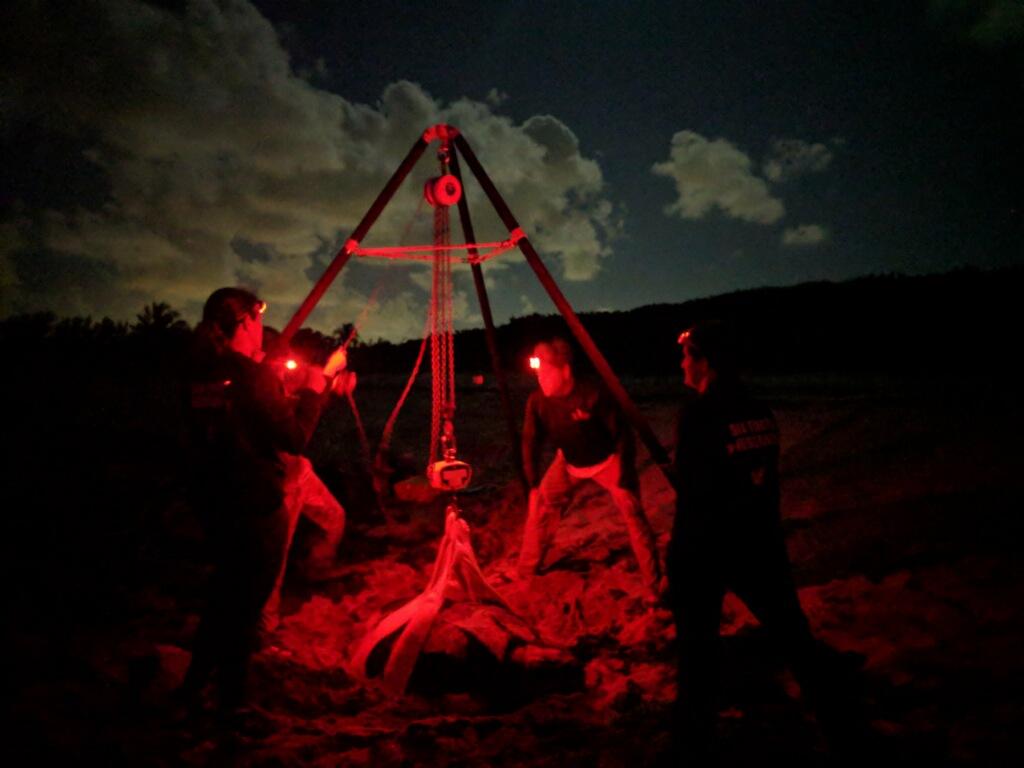Night crew is now past the half way point of the season, but is still keeping up with the momentum. There were 8 encounters this week! We saw two leatherbacks for the second time, Katabatik (tagged in 2008) and Angie (tagged in 2012). The other five ladies were first time encounters this season. We encountered an untagged female with carapace length of 158.2 cm (about 5.19 feet) was named Snail.
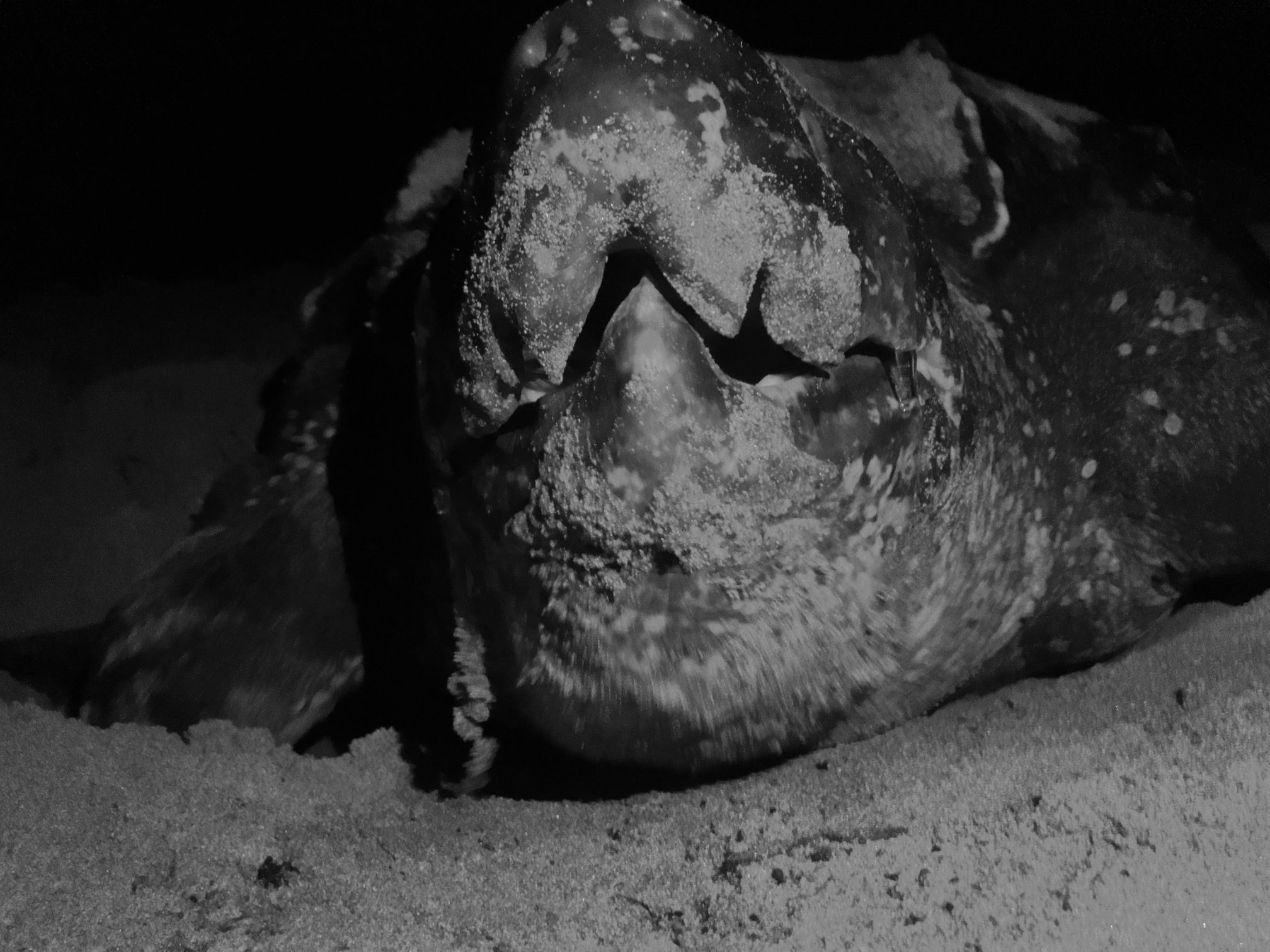
Next up, a tiny lady names Teisen. Her carapace was 138.0 cm (about 4.5 feet) long, which is definitely the smallest leatherback we’ve seen this season! We also saw Warthog (4.65 feet), Madonna (4.69 feet), and Ruth (5.01 feet) during the night patrols.
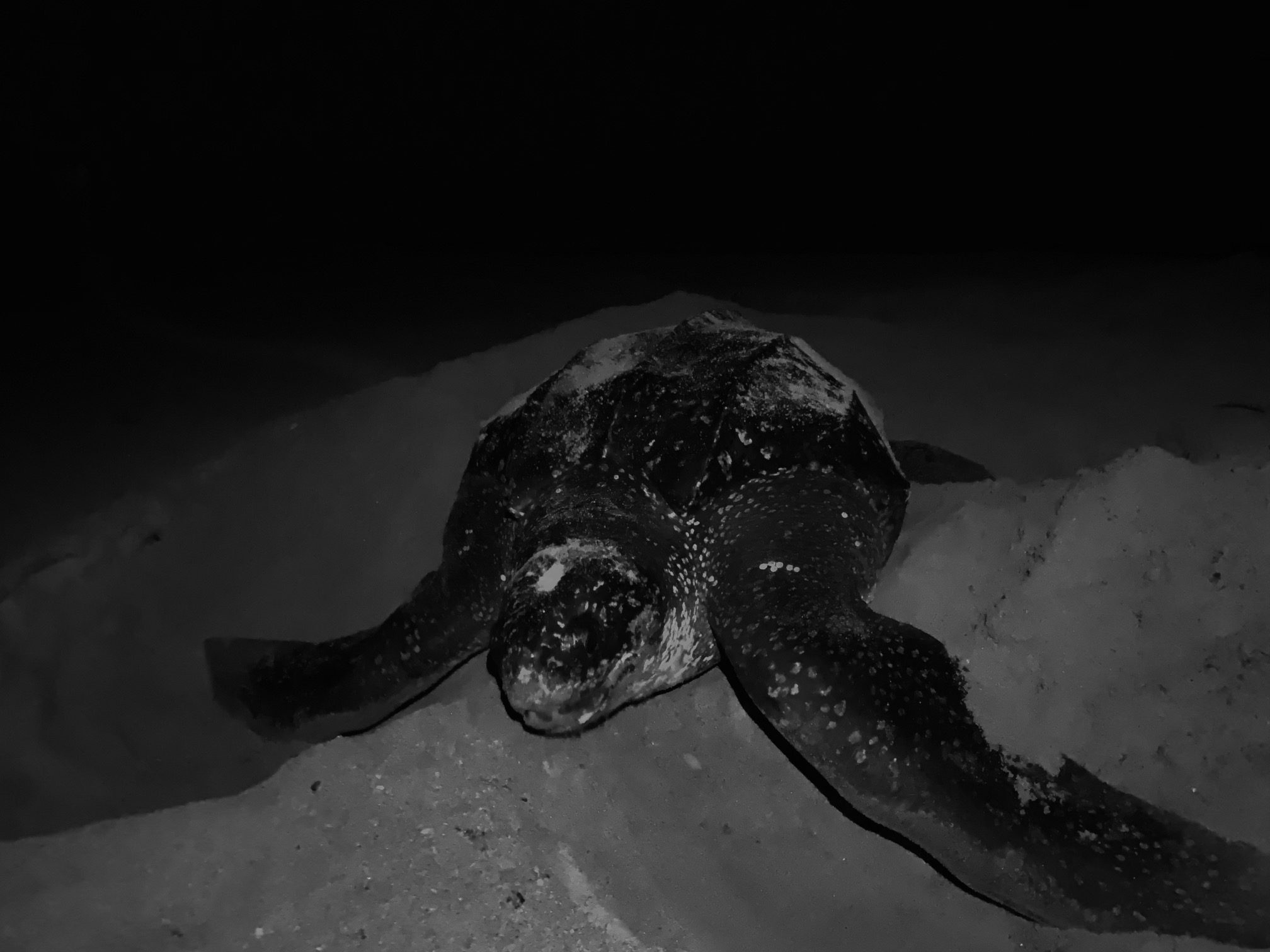
Ruth covering her nest. Photo Credit: Kate Fraser 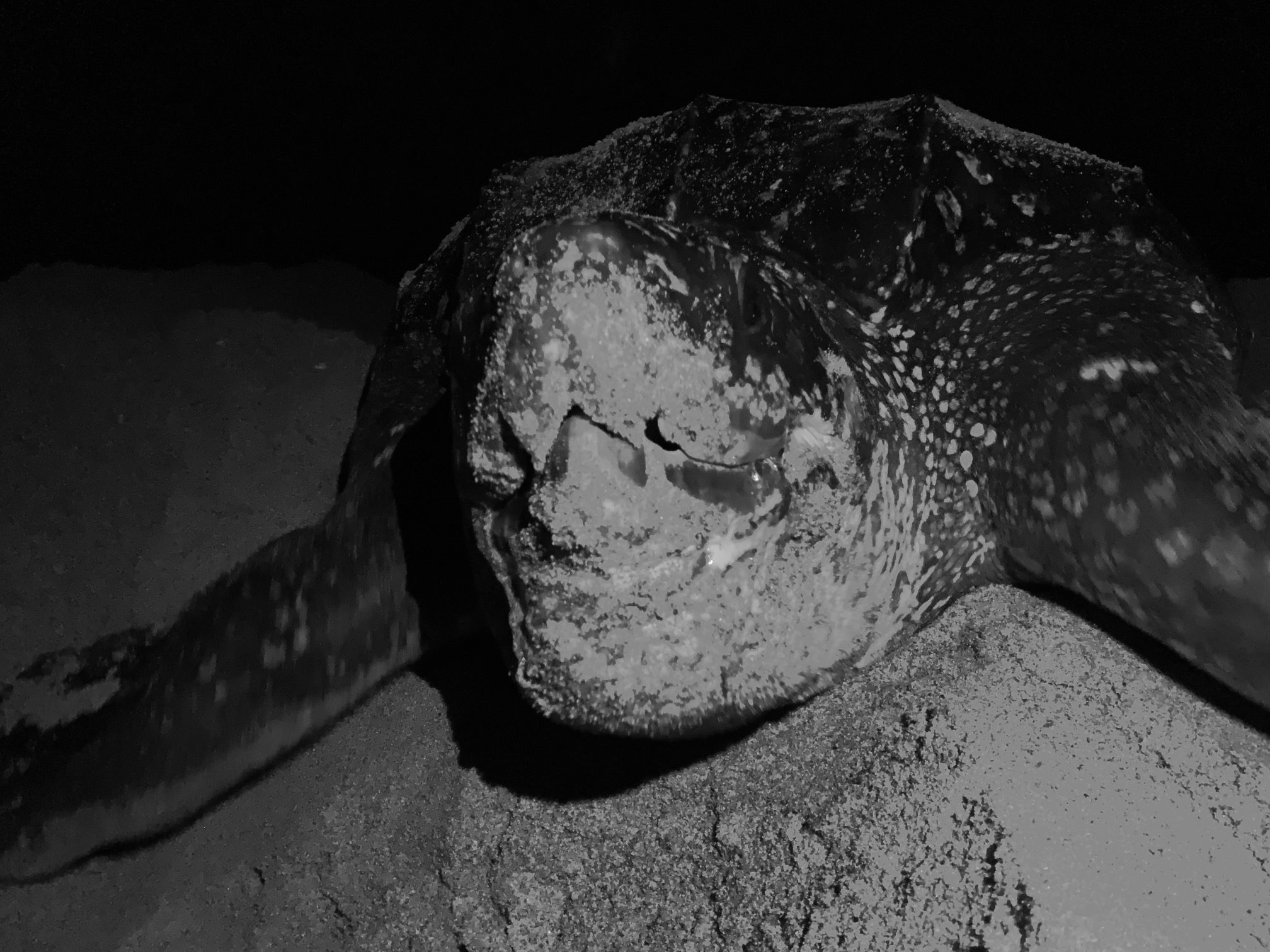
Warthog nesting. Photo Credit: Kate Fraser
Not only do we sample leatherbacks during the day, but sometimes during the day! Val (carapace length of 5.38 feet) was spotted nesting on Singer Island. LMC got a call and went to check her out! We don’t know exactly why some leatherbacks come up and nest during the day, but it sure can be awesome to see! LMC also responded to a leatherback stranded near the Jupiter inlet. She was found with a hook in her shoulder. Our rehab staff were able to remove the hook on site, then released her at Burt Reynolds park with the help of FWC.
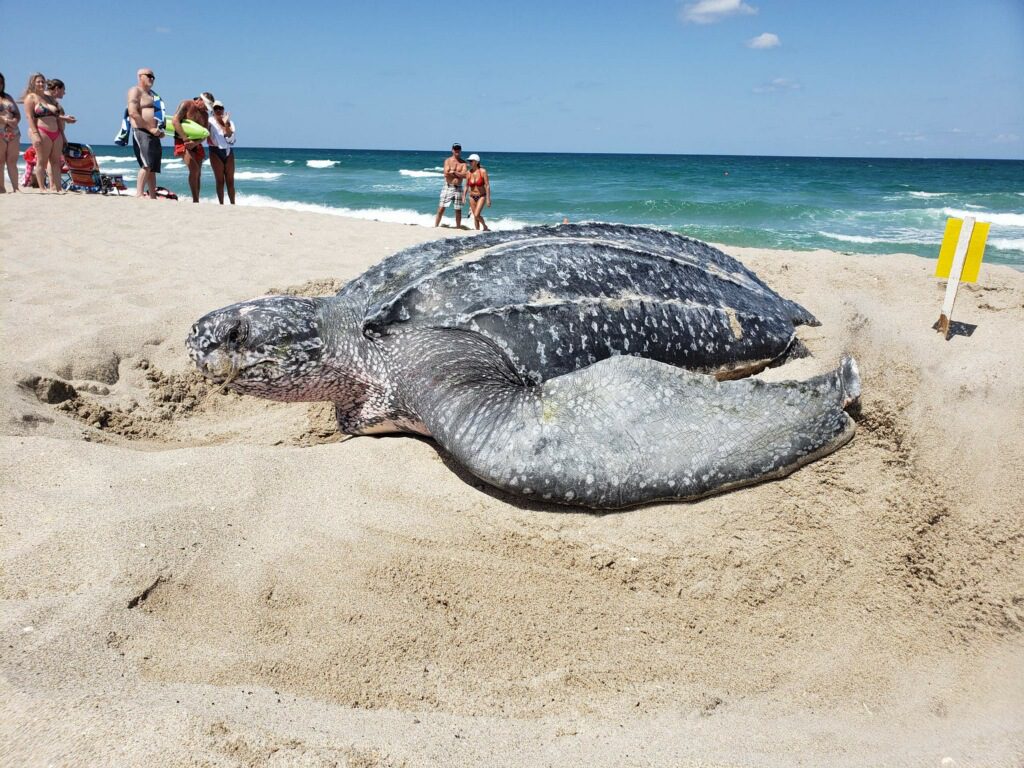
Night crew also started an awesome body condition study this week in collaboration with Upwell and Cal Poly, San Luis Obispo. For this study, the leatherbacks will be weighed! The first turtle for this study was a neophyte (untagged), which was named Tuttle. She weighed 578 pounds! This is the first recorded nesting leatherback mass in the United States. Tune in next week to hear more about the study and find out who we see!
